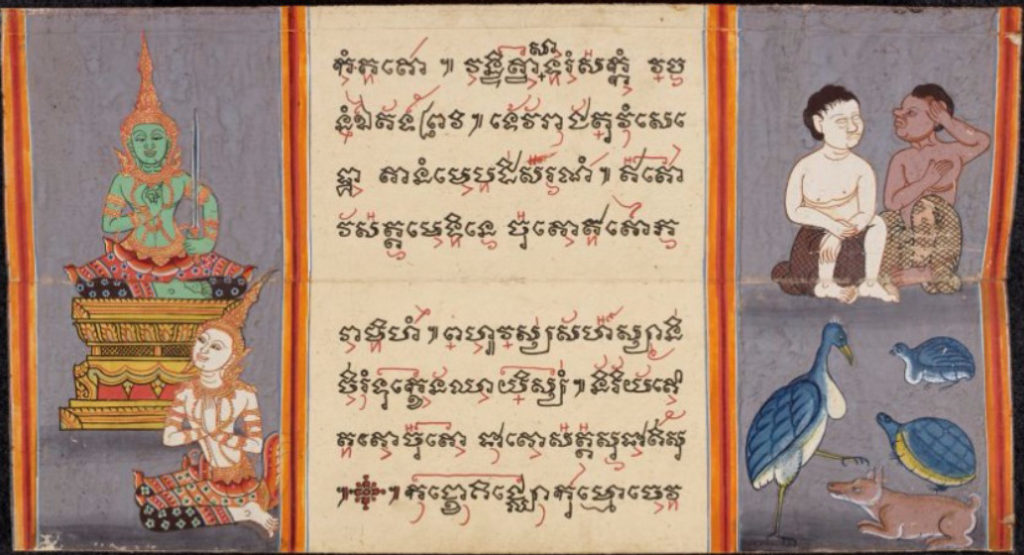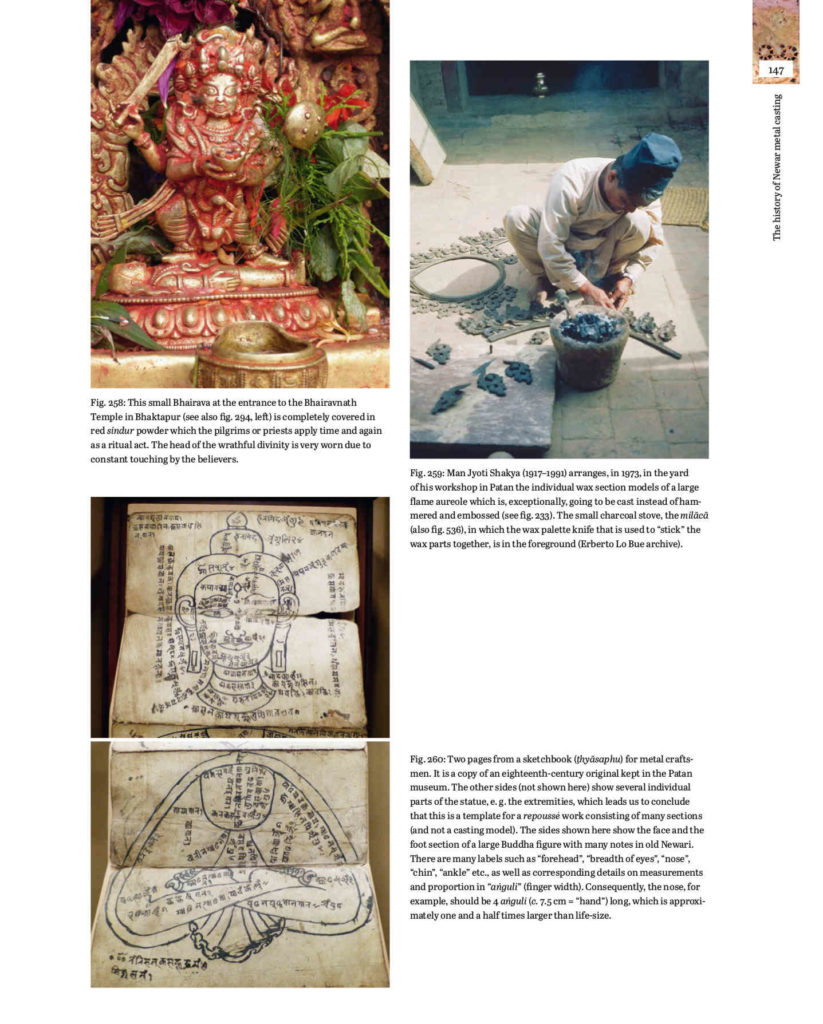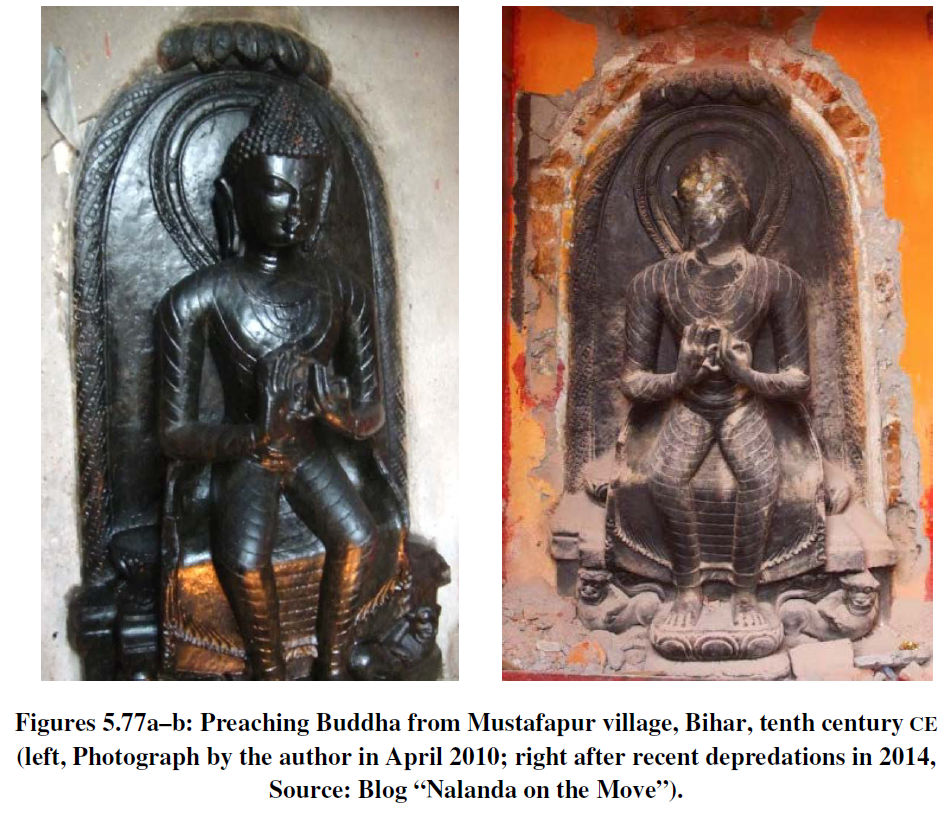Kuranishi, Kenichi (倉西 憲一) & Junlan Bang (房 貞蘭). 2018. Secret Signs for Yogins and Yoginīs–A preliminary edition and translation of Padminī ch.9. Annual of the Institute for Comprehensive Studies of Buddhism, Taisho University 『綜合仏教研究所年報』 40, pp.145-171. URL: http://id.nii.ac.jp/1139/00001085/ [PDF]
Walker (2018), Unfolding Buddhism: Cambodian chanted leporellos
Trent Thomas Walker. 2018. ‘Unfolding Buddhism: Communal Scripts, Localized Translations, and the Work of the Dying in Cambodian Chanted Leporellos.’ PhD diss., University of California, Berkeley. 2+xix+1628 pp. [PDF view] [dissertation website] [author’s website]

Epperson (2017), Kālidāsa in Tibet
Erin Hillary Epperson. 2017. ‘Kālidāsa in Tibet: Messenger Poetry in Translation.’ PhD diss., University of Chicago. [repo (URI): hdl.handle.net/11417/527] [PDF]. 298 pp. Continue reading “Epperson (2017), Kālidāsa in Tibet”
Michaels (2018), Nepal in the World
Axel Michaels. 2018. Nepal in the World. South Asia Institute, Heidelberg University (xasia repository). 27 pp. [DOI:10.11588/xarep.00004115] [PDF]
From the Abstract: This paper is an English version of the author’s farewell lecture held on the 20th of July, 2016, in the old lecture hall (“Alte Aula”) of Heidelberg University.
Tomabechi (2017) & Tanaka (2017) on the Āmnāyamañjarī
वैशाखपूर्णिमायां सुखितं भवन्तु॥
Tomabechi, Toru (苫米地 等流). 2017. ‘Abhayākaragupta作Āmnāyamañjarī 所引文献―新出梵文資料・第1〜4章より (Quotations in Abhayākaragupta’s Āmnāyamañjarī Chapters 1-4 (Extracted from a Newly Available Sanskrit-Tibetan Bilingual Manuscript))’. 『綜合仏教研究所年報』 (Annual of The Institute for Comprehensive Studies of Buddhism, Taisho University) 39, 99–136. [repo] [PDF]
Update (2018/5/11): On the MS and its facsimile edition, see also—
Tanaka, Kimiaki (田中 公明). 2017. ‘アームナーヤ・マンジャリーの新資料 (New Material on the Āmnāyamañjarī)’. 『東洋文化研究所紀要』 (The memoirs of Institute for Advanced Studies on Asia) 172, 37–48. [repo] [PDF]
NB: Quotations from the following Sanskrit texts are extracted from the publication earlier noticed here: Continue reading “Tomabechi (2017) & Tanaka (2017) on the Āmnāyamañjarī”
Chen (2018), Indian Buddhist Logic in Tang China
Chen, Shuai. 2018. ‘Rethinking Indian Buddhist Logic in Tang China: An Analysis and Translation of the Sādhana Section of Kuiji’s Commentary on the Nyāyapraveśa‘. PhD diss., Universität Heidelberg. 405 pp. [DOI: 10.11588/heidok.00024097] [PDF]
From the abstract: […] a study on the Yinming ru zhengli lun shu 因明入正理論疏 by Kuiji 窺基 (632–682). […] Continue reading “Chen (2018), Indian Buddhist Logic in Tang China”
Sugiki (2018), Ḍākārṇava 50-3, 50-8
Sugiki, Tsunehiko (杉木 恒彦). 2018. ‘Rethinking the Buddhist Discourse on Holy Sites in the Ḍākārṇava: A Critical Edition and a Translation of the Sanskrit Ḍākārṇava Chapter 50-3′. WIAS [Waseda Institute for Advanced Studies] Research Bulletin (早稲田大学高等研究所紀要) No.10, 39–90. [repo] [PDF]
Sugiki, Tsunehiko. 2018. ‘The Sādhana of the “Adamantine Body” Maṇḍala ―― A Critical Edition and a Translation of the Sanskrit Ḍākārṇava Chapter 50-8′. Journal of Chisan Studies (智山学報) No.67, 45–87.
author: academia.edu
Sonoda (2016), Pañcarakṣā dhāraṇī studies
Furger (2017), The Gilded Buddha
Alex R. Furger. 2017. The gilded Buddha: The traditional art of the Newar metal casters in Nepal, with a contribution by Ratna Jyoti Shakya. Basel/Frankfurt a. M.: LIBRUM Publishers & Editors. ISBN: 978-3-906897-06-6. DOI:10.19218/3906897066. [official] [PDF 🔓]
Note: This extraordinary book covers almost every conceivable aspect of metalworked image production in the Newar Buddhist community.

Revire (2016), The Enthroned Buddha
Nicolas Revire. 2016. ‘The Enthroned Buddha in Majesty: An Iconological Study’. PhD diss. (Religions), Université Sorbonne Paris Cité. 2 vols., 410+299 pp. HAL ID: <tel-01552082>. [PDFs: vol.1, vol.2] [author: academia.edu]

From the Abstract: This dissertation consists of a detailed study of a particular representation of the Buddha, in which he sits on a prominent throne, i.e. a bhadrapīṭha or bhadrāsana, in a majestic posture with two legs pendant, that is, in bhadrāsana or the “auspicious pose.” This pendant-legged imagery, generally associated with a throne, has been found widely depicted in ancient religious art associated with early urban complexes and is, as a rule, mostly associated with kingship, fertility, and even divinity. […] Continue reading “Revire (2016), The Enthroned Buddha”

